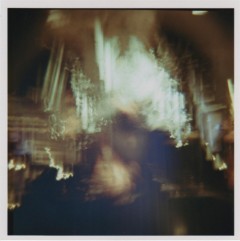Editorials Andrew Bartels — July 30, 2013 12:09 — 0 Comments
The Monarch Drinks With Rachel Rosenfelt
I first read The New Inquiry—the magazine Rachel Rosenfelt directs and edits with a corps of co-editors and writers—in early 2012, the buzz of the Occupy Movement still in the air. I distinctly remember coming across the word Precariat then, a portmanteau of proletariat and precarious that describes a new social class subsisting on intermittent or insecure work, and therefore occupying life-styles that transgress typical social categories. In my understanding, the term applies as readily to migrant workers as to a generation of well-educated young adults who can’t find work in a shrinking academia. In an interview with the Los Angeles Review of Books, Rachel describes how The New Inquiry scoops up these extra-institutional, would-be intellectuals into a community that seeks to reestablish a public intellectual culture—one enabled by internet publishing and social media. I would guess that the intellectual slice of the Precariat comprises the readership of The New Inquiry as well, although several of their essays have reached more of a mass audience through news aggregators such as Jezebel and Gawker.Â
When Rachel arrives at Bijan’s, a restaurant in Boerum Hill, Brooklyn (her neighborhood) which looks like a cross between a century-old wine-cellar and a candy store—I’m relieved that she has more questions for me than I do for her: she immediately asks me about The Monarch Review and what I do for the magazine. To be honest, I was not a little nervous to meet Rachel, but she put me immediately at ease and set our conversation off with a casual tone.
After glancing at the menu, we quickly decide to order a selection of yogurt and eggplant “Meze†dips with pita bread and olives as well as a plate of calamari with a marinara sauce. Rachel orders the Jalapeño Margarita, and I the Bijan—vodka, pineapple, elderflower, and cayenne. Bijan’s website says the menu is “Persian-inspired†though they could describe it as “Greek-inspired†and no one would notice.
In response to a question I asked about some of the early pieces The New Inquiry published, Rachel describes the genesis of The New Inquiry as a Tumblr blog she developed with a couple of friends in 2009. “It’s unrecognizable to what it is now. It’s really hard if you don’t have money to get someone to write for your unproven magazine. Why on earth would someone put labor into that? I got good about being told ‘No’ a lot, and I didn’t mind being told ‘No,’ and every now and then someone would say ‘Yes’. It took years of that.†At this time she was the “kitchen girl†for the food truck Calexico in Red Hook. “I was literally re-containerizing guacamole for like a year.†On her way to work everyday she would drop into a different café or gallery and ask if the magazine could commandeer the space for a few hours a week, in order to hold a salon. “I figured that’s what I could offer, something of value, a community. It needed to be in a permeable public-private space, but no one would give me a shot.†Her matter-of-fact attitude about the magazine’s humble beginnings belied a sense of pride: the way she talks about it is in a sort of bootstraps way—through determination she was able to gather the best writers and thinkers she could find in order to develop a true, non-hierarchical community and a supportive readership. She spoke dismissively about magazines that pop up with private money, that have a beautiful site and no content.
By this time the food is on the table, but I’m so engrossed in our conversation that I don’t pay much attention to it. I press Rachel a little about how ideology figures into The New Inquiry’s identity, and what kind of decision process is involved in selecting and publishing essays. Rachel is quick to assert that the magazine is “not pushing a political line. We have a very dissensus based editorial board—we don’t agree on anything, almost nothing. There are like ideological enemies on staff, you know.†The adversarial aspects of the magazine’s ideology or aesthetics is something Rachel clearly values and it’s probably part of what makes the magazine so polymorphous and exciting, but I got the sense that Rachel’s heart was really invested in the communal and dialogic aspects of the magazine. “If one editor wants to champion a piece, that’s all we need for it to run. We may disagree with it, and often do, but if you become an editor of the New Inquiry, that means you have my complete trust.â€
I’m impressed by Rachel’s deep respect for the views of the other editors and writers and her frequent refusal to allow her own views to eclipse theirs; she often gives explicit cues to distinguish when she’s speaking as an editor, and when she’s speaking for herself. As we were talking about the spectrum of thought on The New Inquiry editorial board, she spoke more directly about her own views. “Personally, I’ve always been drawn aesthetically, if not politically—although often politically—to the anarchist temperament. I think the manner of thinking in anarchist groups is more interesting than the manner of thinking in socialist groups, let’s say. Do I think politically anarchy is more viable or important than socialism? I don’t know. That’s not for me… My job is to put the smartest people in charge and see what they can do.â€
Rachel’s turn of thought is so rich that I whole-heartedly agree and don’t think to ask what defines intellectual anarchism in distinction to the very visible anarchist street tactics, or from post-Structuralist criticism. If I have a chance to catch up with her in the future, perhaps I’ll think to ask it. Instead I ask whether The New Inquiry caters to a niche audience and how Rachel sees the magazine evolving in the future.
“What The New Inquiry is now is not what it’s going to be in, like 5 years. I don’t know that The New Inquiry is going to be around forever. At a certain point there’ll be something more interesting that is happening and I don’t want to suck the air out of the room. I think that definitely happens with older magazines, clinging to life as though they deserve to exist when it’s what they represent that deserves to exist. The question is if X magazine goes under will the thing they represent also go under? And I would say, no it absolutely won’t. But we have this entrenched power and networks represented by white, wealthy men… the atrophy of their industry has been accelerated by their short sightedness, and their misogyny, classism and racism.â€
I asked what magazine she was referring to. “I don’t want to name names. I would look at the Vida report.†I had never heard of Vida—they publish an annual report on gender statistics in the publishing industry. The pie charts are distressing and enlightening. “My problem with Vida is: why are we trying to save them from themselves? They’re going under. Let them fail on the basis of being disinteresting because they don’t publish women. Like how boring can you be? When you’re not serving half of the population, well maybe you’re going to go out of business. Let them die, let them burn, start your own fucking magazine! I’m not interested, from a feminist perspective, in pointing my finger and tattletailing… I’m not interested in demanding these changes be instituted. How boring!â€
Like many of Rachel’s responses, she weaves together several threads of our conversation and adroitly dismantles my simplistic preconceptions of audience: “Our most popular pieces have almost all been things that register most strongly with women. There are a lot of smart women out there, and if they’re not being served by those magazines… I think that’s why we’re doing so well.â€
“I’m being very candid with you. Maybe it’s the jalapeno margaritas.†I have no sense of how candid Rachel normally is, but I get the feeling that she’s generally gregarious and voluble, with a natural élan that helps explain how she created this space of intellectual inquiry that attracts so many of New York’s literati.
We talk more casually for a while, about the serendipity of New York, about the documentary film Cruise, and about Brazenhead Bookstore, a kind of speakeasy bookstore in Yorkville in a small, rent-controlled apartment where The New Inquiry staff held a weekly salon. “It’s not like an event where people sit around and talk about ideas. I would be really turned off at the idea of somebody else doing a salon. I would say it’s pretentious and annoying, the very thought that I would have to go and perform intellectually for people. Our salon is—you literally just get drunk.†They decided to end the salon after the New York Times wrote a profile of the magazine. “The Innocence was lost of the thing.†The bookstore is still open on certain nights and the editors and writers still go there to hang out with the owner, Michael Seidenberg, who, according to Rachel, is “the touchstone of the project.†Since we didn’t spend our entire budget on dinner, Rachel suggested I use the rest of the money to buy a bottle of whiskey and go to Brazenhead. I did just that.
+++++++
I find the address that Rachel had written in my notebook, a flimsy doorway nestled between a couple of nondescript pubs, and ring #7. Once I’m buzzed in and find the apartment, Michael, a jolly-looking guy, about 50, with grey hair and a bit of a belly lets me in and introduces me to the eight or so people standing around, including Rob Horning, one of The New Inquiry’s editors, and Helena Fitzgerald, a contributor. I’m charmed. Every wall is covered floor to ceiling with shelves and books, all used. I pour myself a glass of whiskey and explore. Before long I’m talking with a lady named Jane about complex systems, fluid dynamics, chaos theory, and New York City traffic.
Michael is definitely the life of the party, telling off-color jokes, quick to connect the current conversation with something someone said twenty minutes ago, like a juggler adding more and more balls to the act. He tells the incredible story of Brazenhead, how for years no one would come but he still changed the display books scattered throughout the store every week, just because he loved the books and the space so much. He talked some about Rachel, who seemed to have an undeniable presence in the bookstore, as if she were about to walk in at any moment.
“It gave new inquiry an identity,†Rachel had said about the Brazenhead salon, without any touch of nostalgia. It was a “pure, exhilarating space of meaningful interaction.†The bookstore reminds me of an art space in Seattle called Vignettes, hosted in a small studio apartment—twenty people could fill the space, somehow banishing the chill reverence of a typical gallery show. Considering what Brazenhead means for Rachel, I can’t help but draw a comparison with the website, and the dialogue happening there, which has the potential of becoming international. A recent “supplement†published on The New Inquiry, “Kenya Refuses,†is the beginning of an effort to include more international coverage and to open the platform of the website to even more writers, further decentering the authority of the publication and fostering a broader dialogue that the internet makes so easy. The idea of “newness†is never far away from discussions of the internet, but perhaps the independent dialogue happening in certain realms is really a reincarnation of an older tradition, of which the salon is an historical example. As Rachel says: â€The public intellectual culture has reconstituted itself and we’re finally starting to see what that looks like.â€
The answer isn't poetry, but rather language
- Richard Kenney




